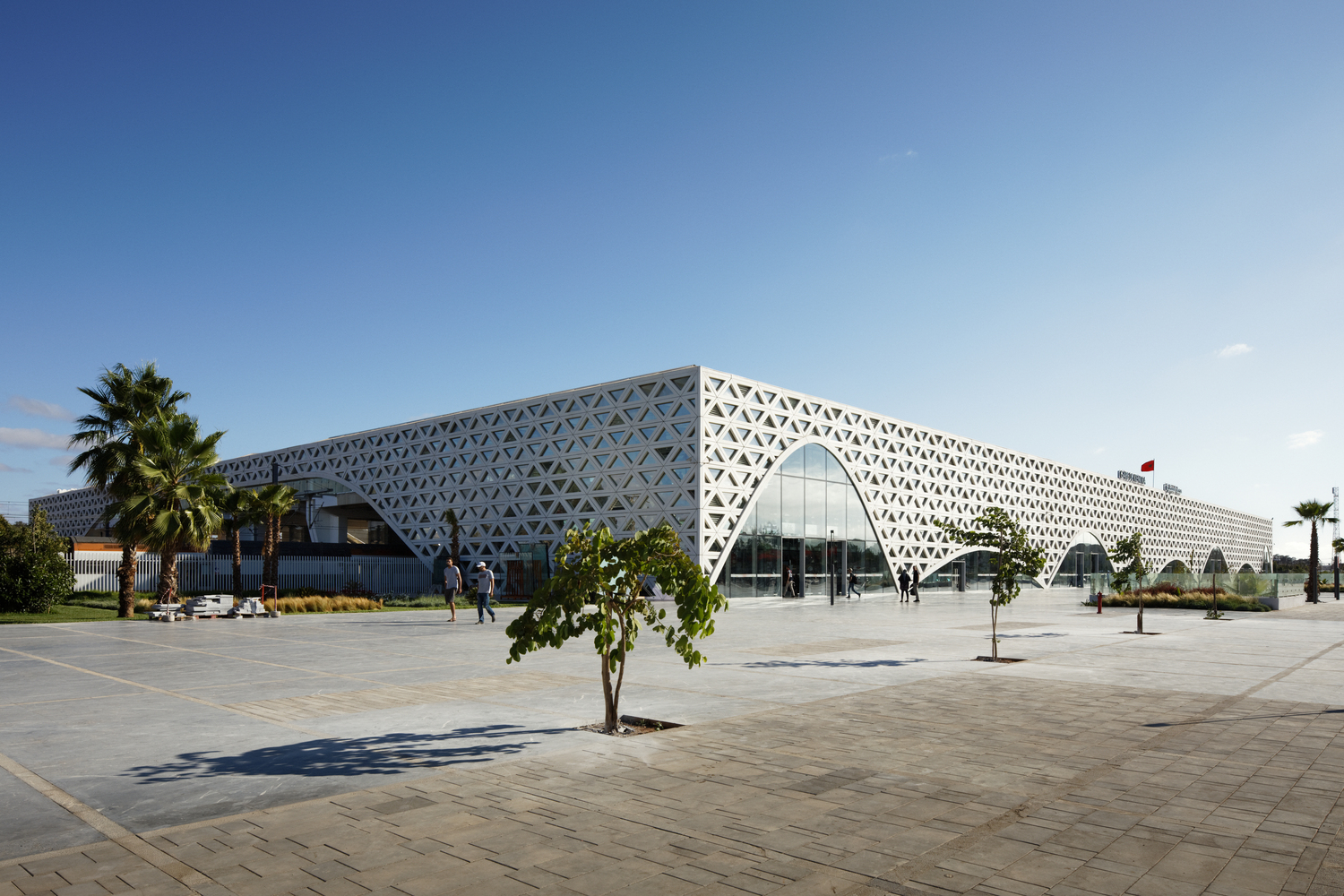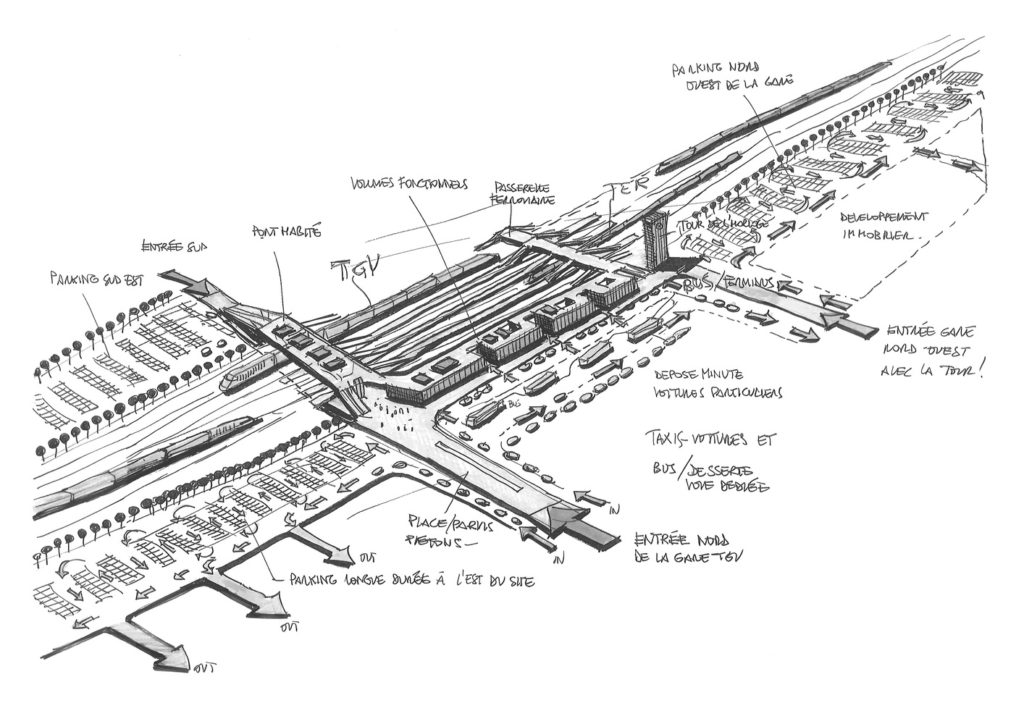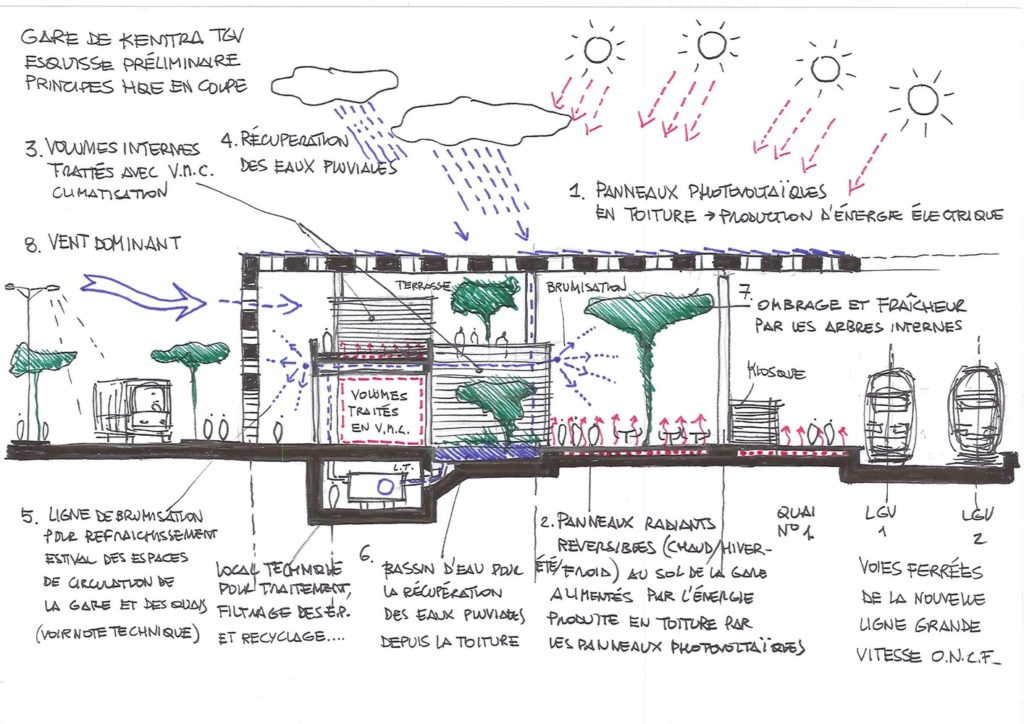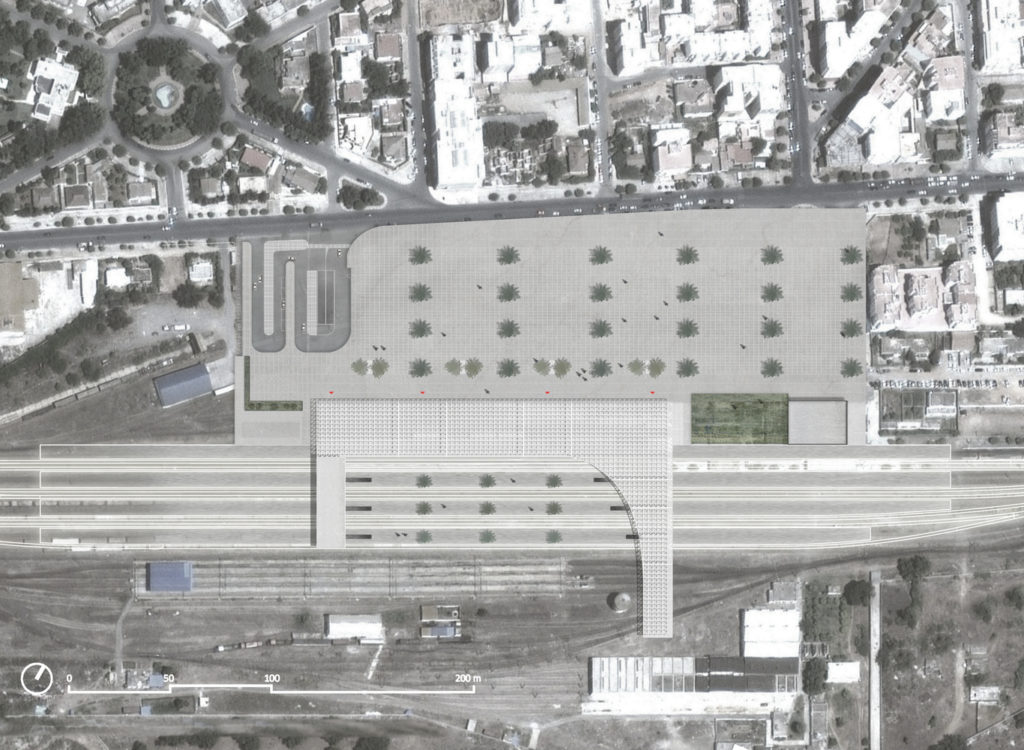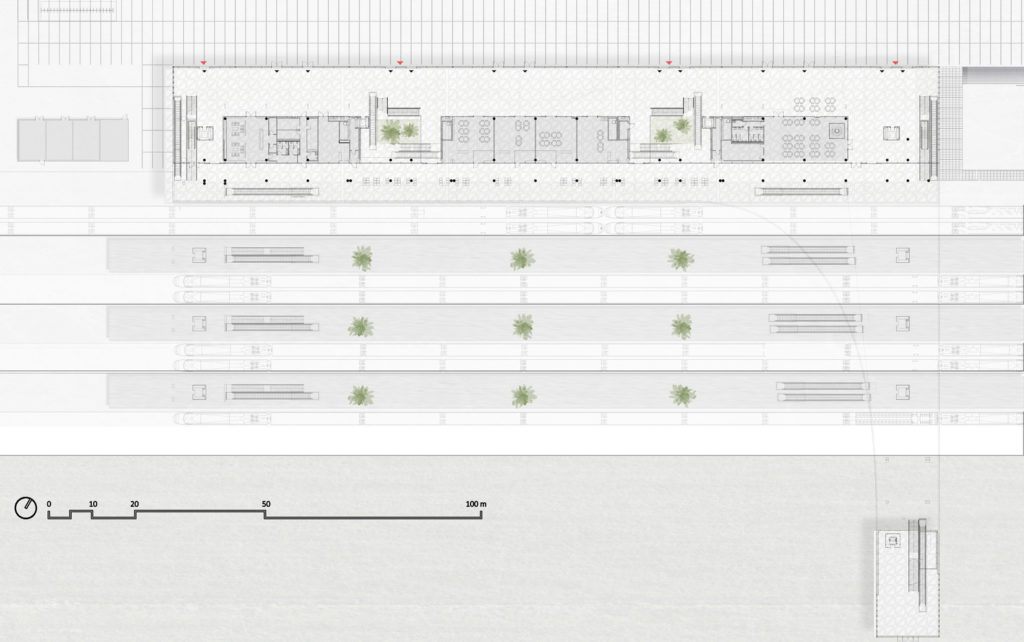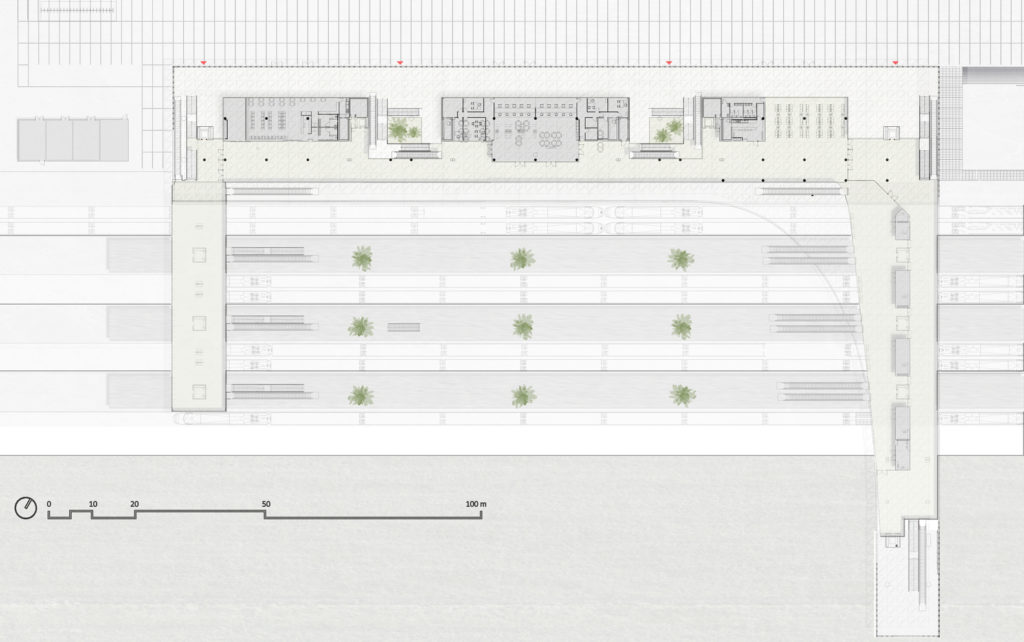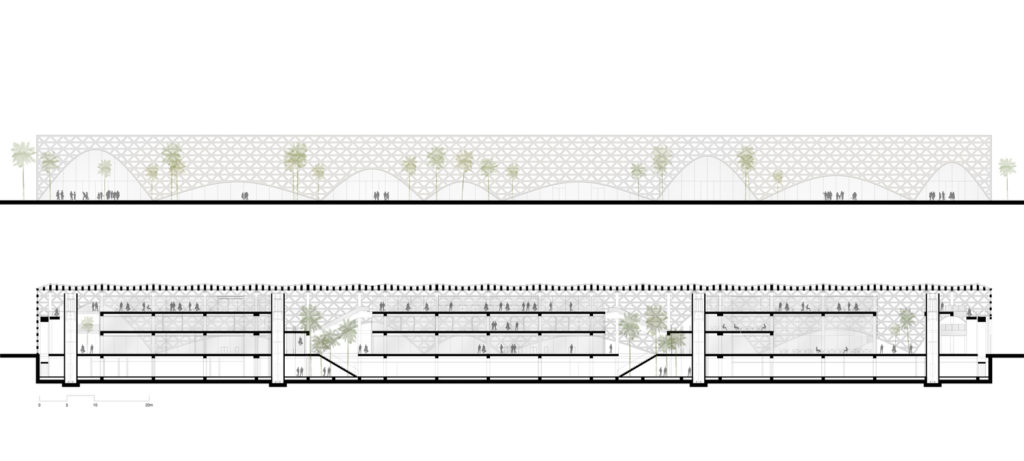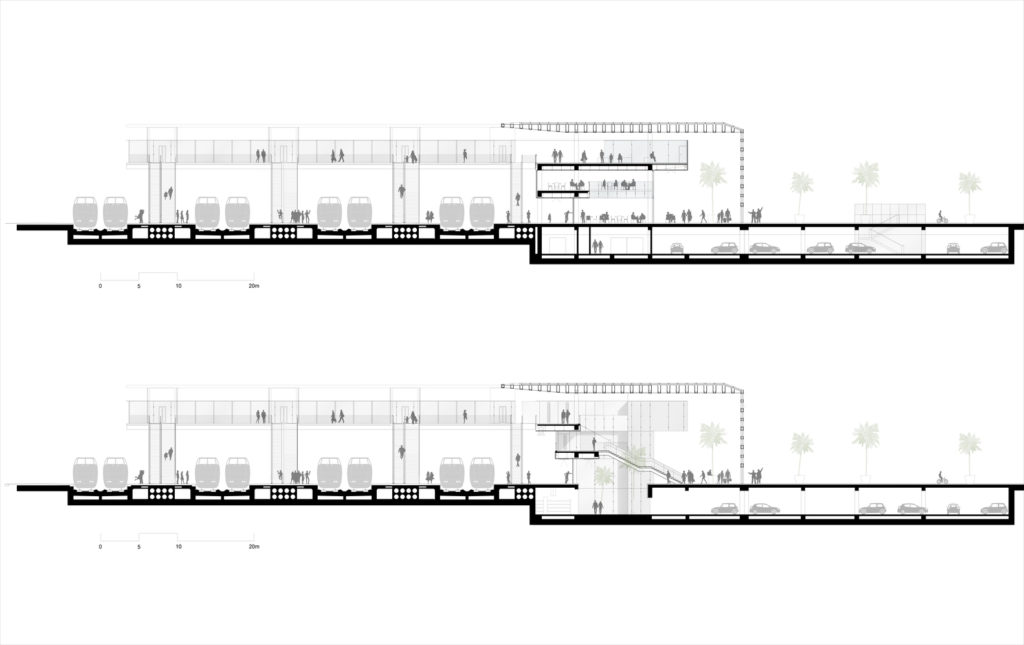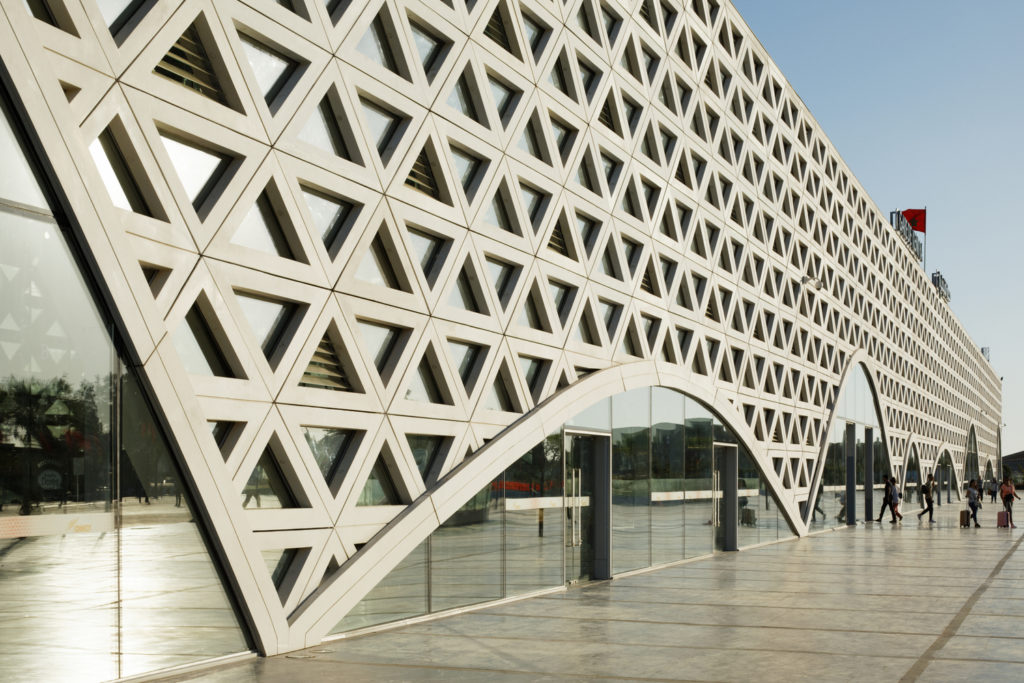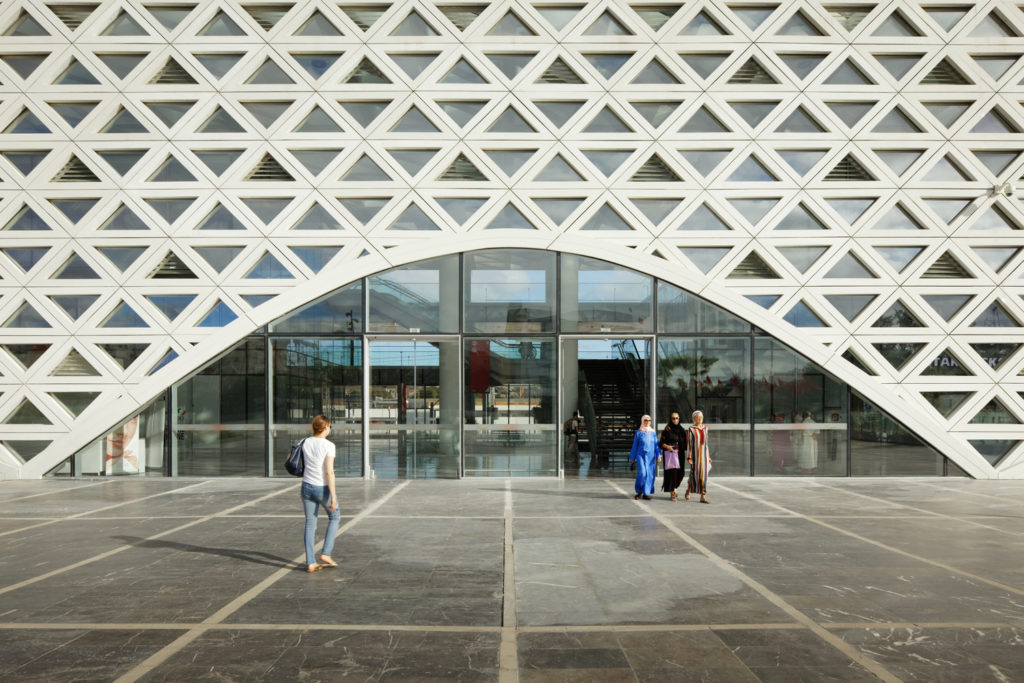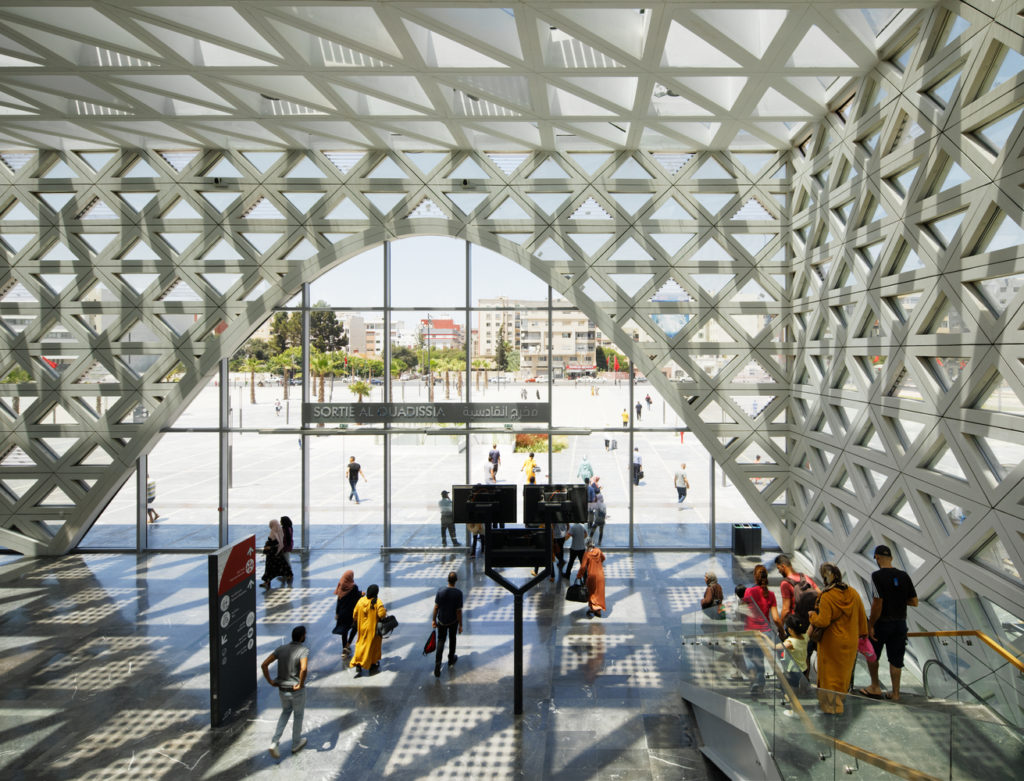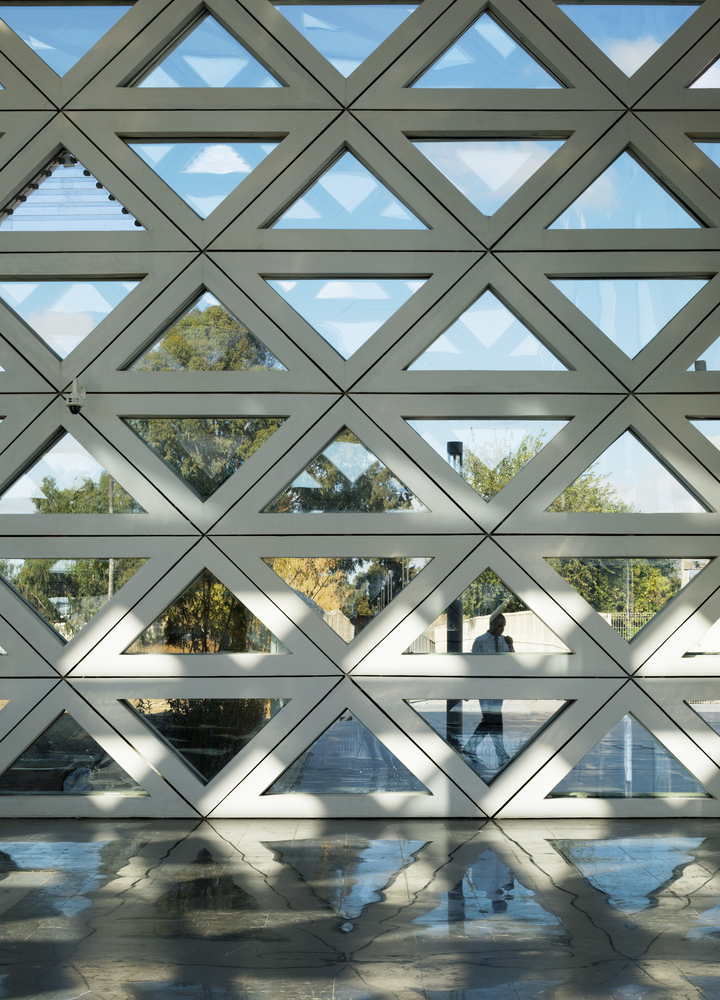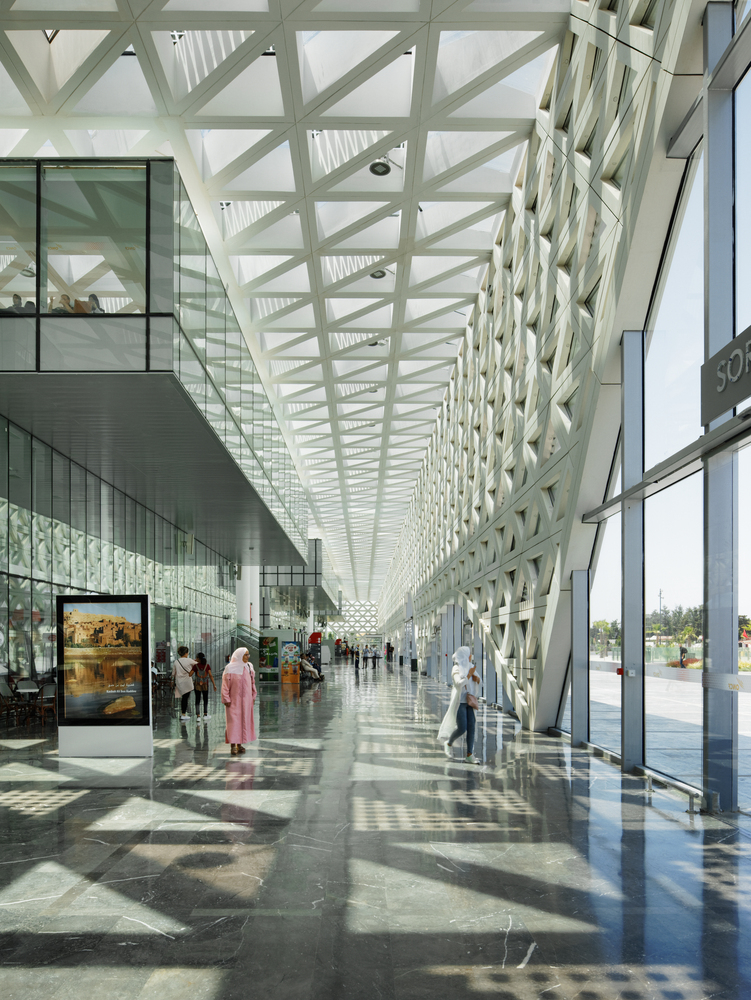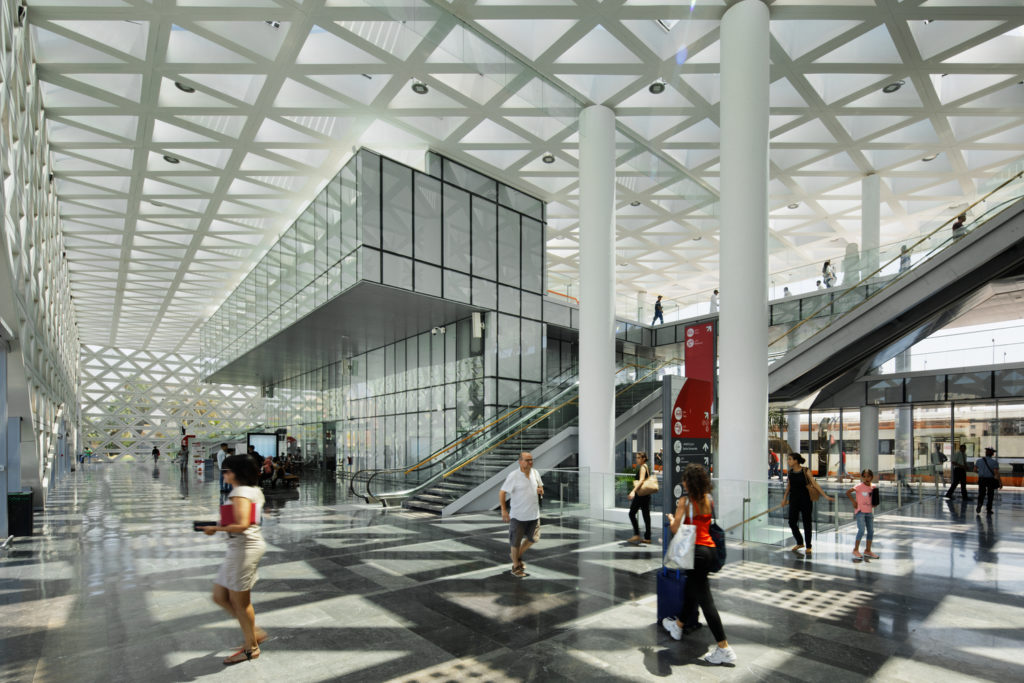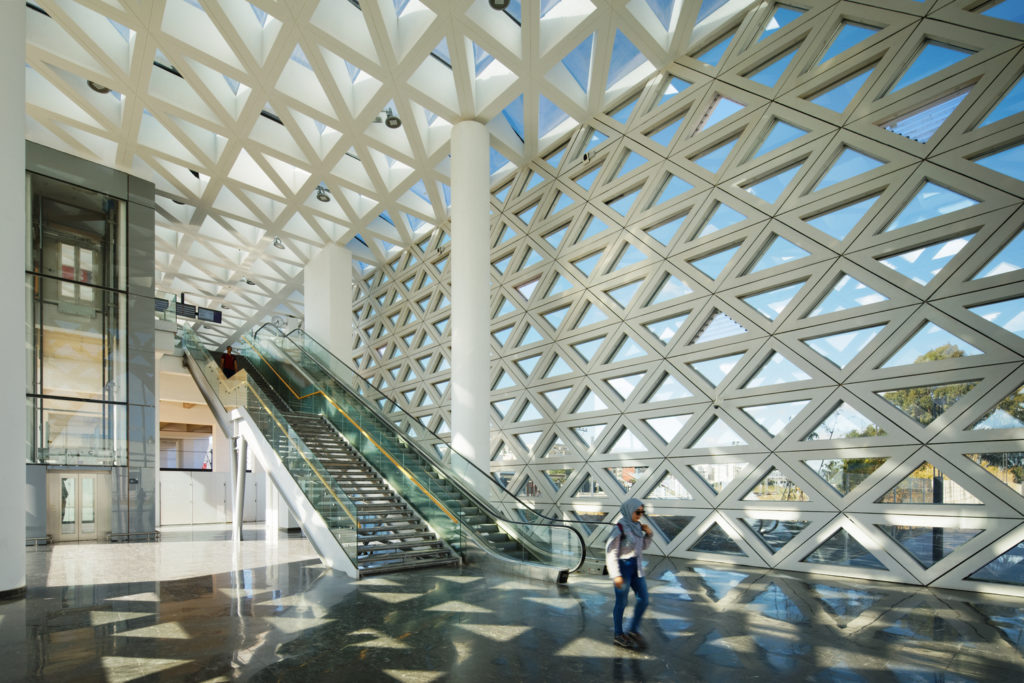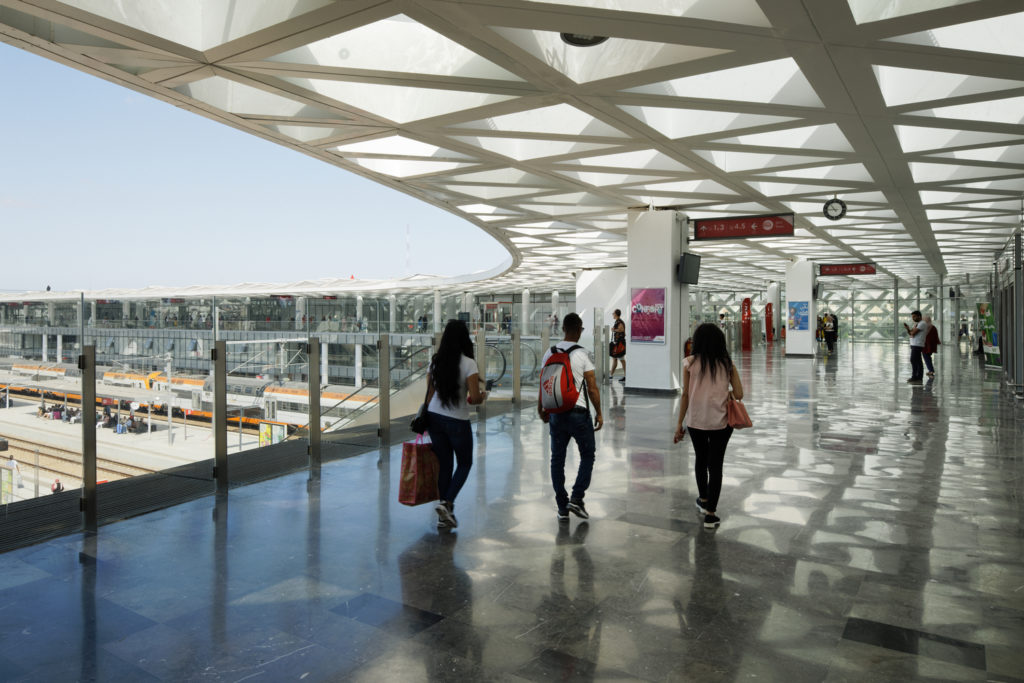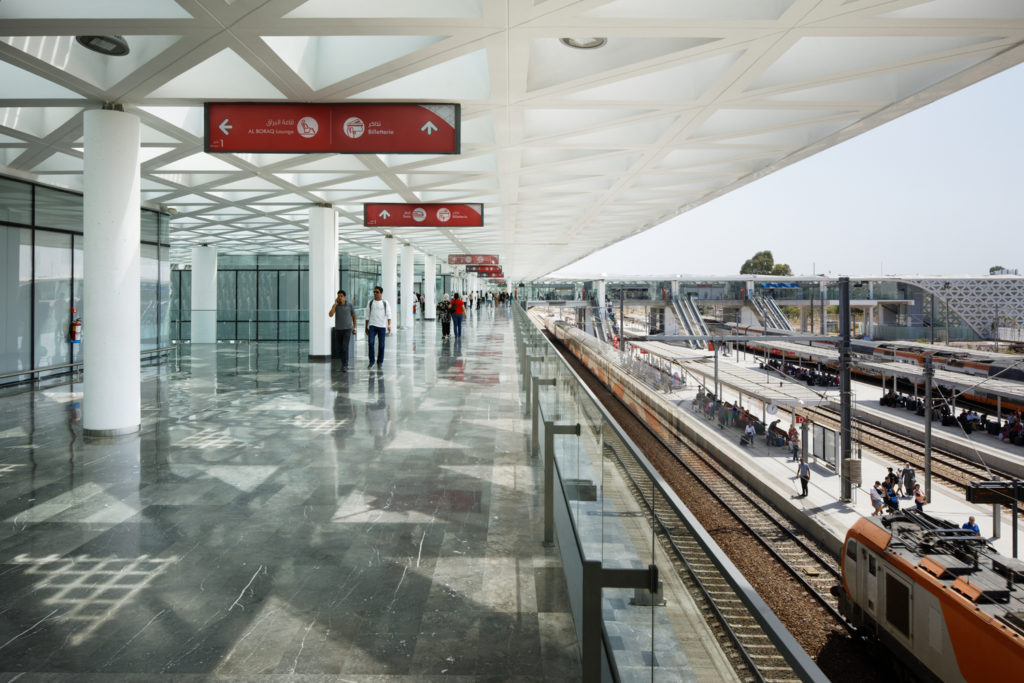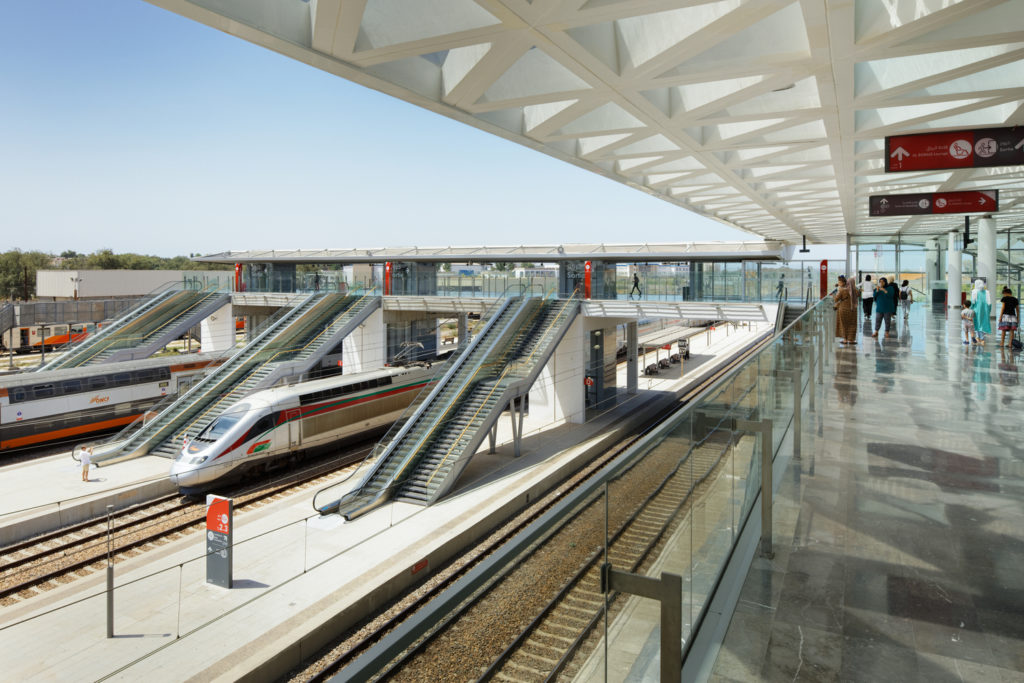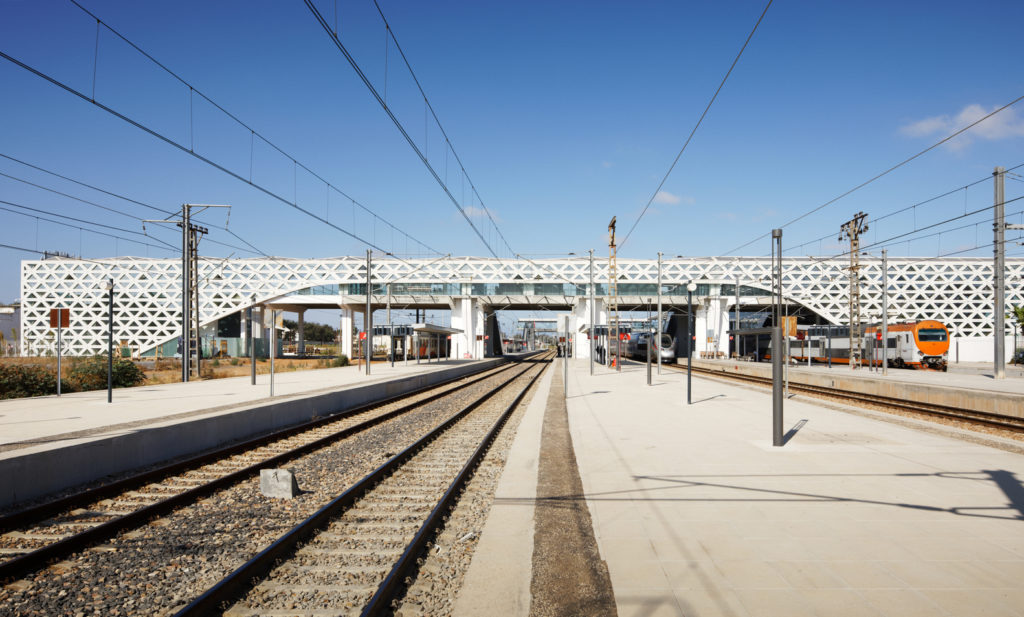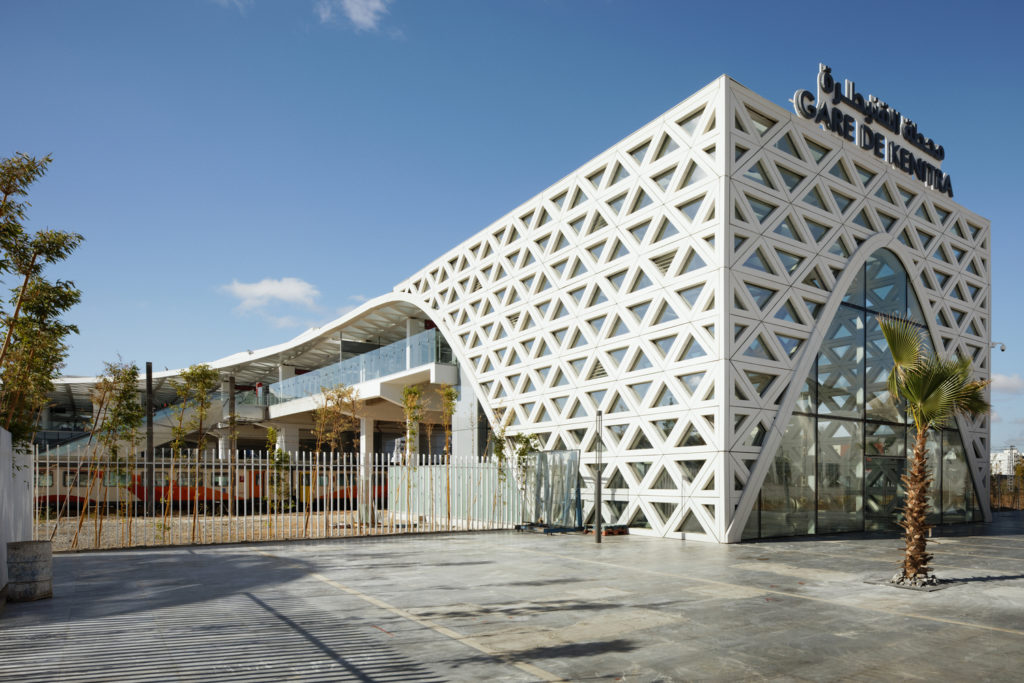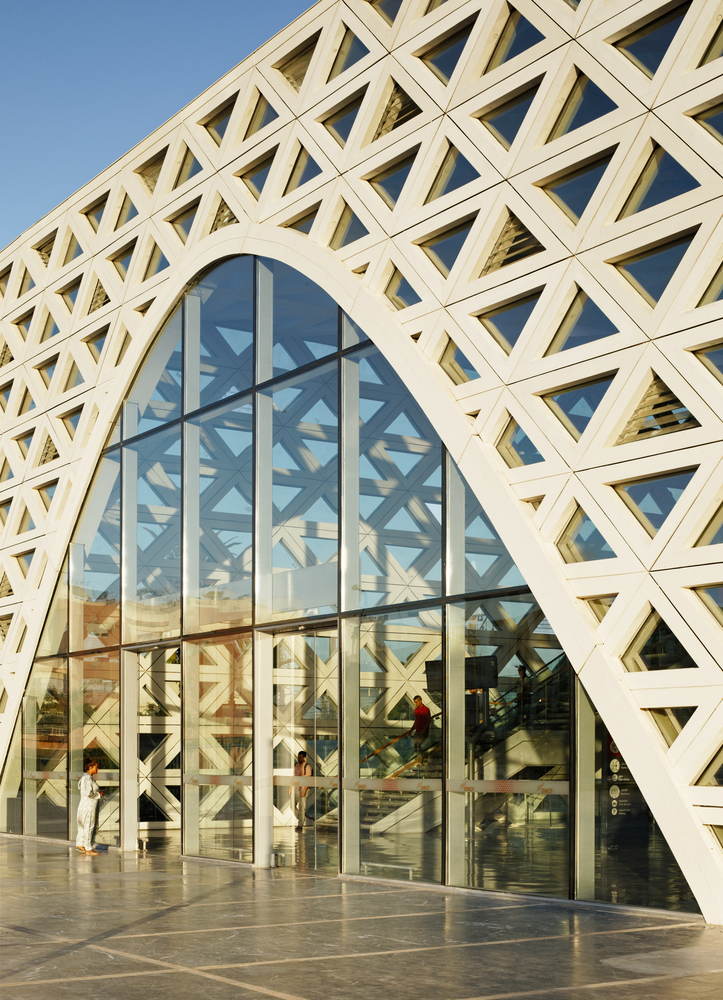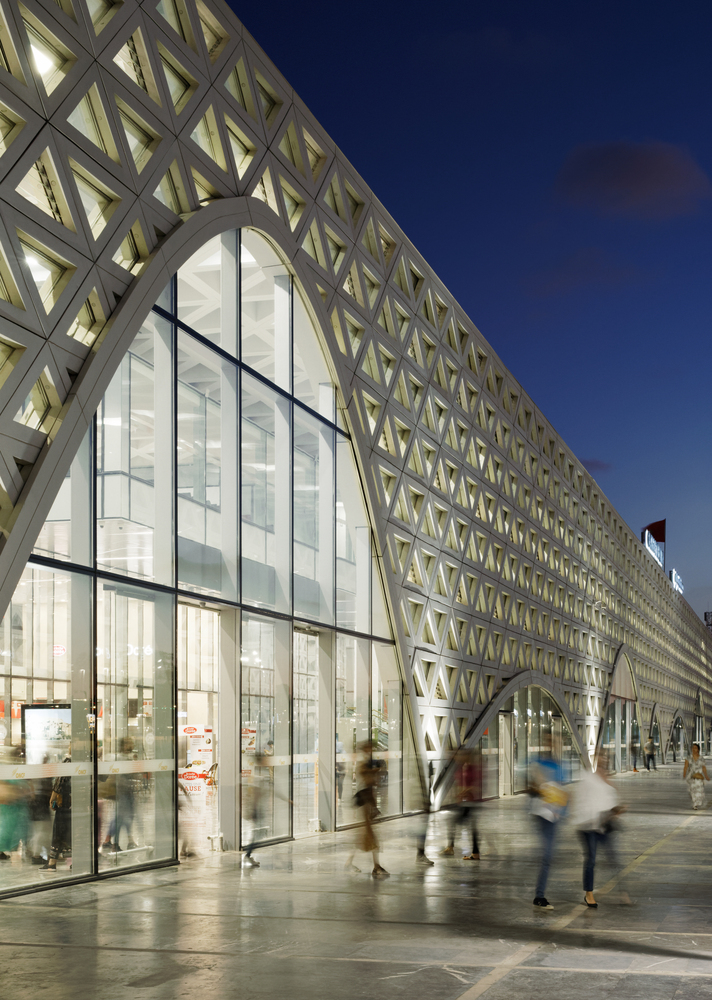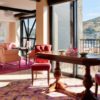The Kenitra Train Station is a new 13500 sqm, high-speed rail station and transit hub facility in the city of Kenitra, (formerly known as Port Lyautey) in northern Morocco.
Designed by French architectural practice, Silvio d’Ascia Architecture in collaboration with local practice, Omar Kobbité Architects, the station is one of several new rail stations for a high-speed line currently under development by the ONCF state railway organization. The design draws inspiration from the local context most prominently with its undulating façade of geometrical openings and cut-outs, a nod to the traditional mashrabiya.
…200 meters long – the length of a standard high-speed train (TGV) – and a height of 12 meters, it is composed of more than 800 triangular blocks of fiber-reinforced, ultra-high performing concrete…
The building also utilizes passive design strategies to naturally ventilate a large part of its interior. The structure incorporates two main levels for passenger and public services, forming an L-shape over the rail tracks. In a sense, it serves as part building, part pedestrian causeway, to anchor a new urban district for the city, and link several Eastern and Western neighborhoods allowing residents and passengers to easily circulate from the station to adjacent districts currently divided by railway lines.
Project Description
The Kenitra station was imagined as a jewel case framing the renewed identity of traditional Moroccan architecture in an urban context, in particular, thanks to its facade, a reinterpretation of a mashrabiya expanded to the scale of the city. Associating the socio-economic and technological progress concretized by the arrival of the Al Boraq TGV, the station is a symbol of this city’s and of Morocco’s integration with the modern world.
In addition to being the place to take the train, the station’s spatial and functional organization is designed to serve as a key public space of the city’s daily life. It now enables city dwellers to pass back and forth between the new city districts on the south side and the historic district on the north side. Prior to its construction, the only connecting point was a narrow subterranean passageway. This new urban bridge above the railways contains shops and services and facilitates the smooth flow of the foot traffic of passengers and inhabitants crossing the city. The station’s dual entry points to the city, to the north and the south, to help balance the urban fabric and turn the city into a genuine public space for all.

The facade of the station is an imposing screen, like “an urban mashrabiya”, permeable to the flow of foot traffic crossing the plaza and the passenger building. 200 meters long – the length of a standard high-speed train (TGV) – and a height of 12 meters, it is composed of more than 800 triangular blocks of fiber-reinforced, ultra-high performing concrete overlooking the broad marble and concrete plaza, on the historic city side, thanks to 8 imposing arches of varying geometries.
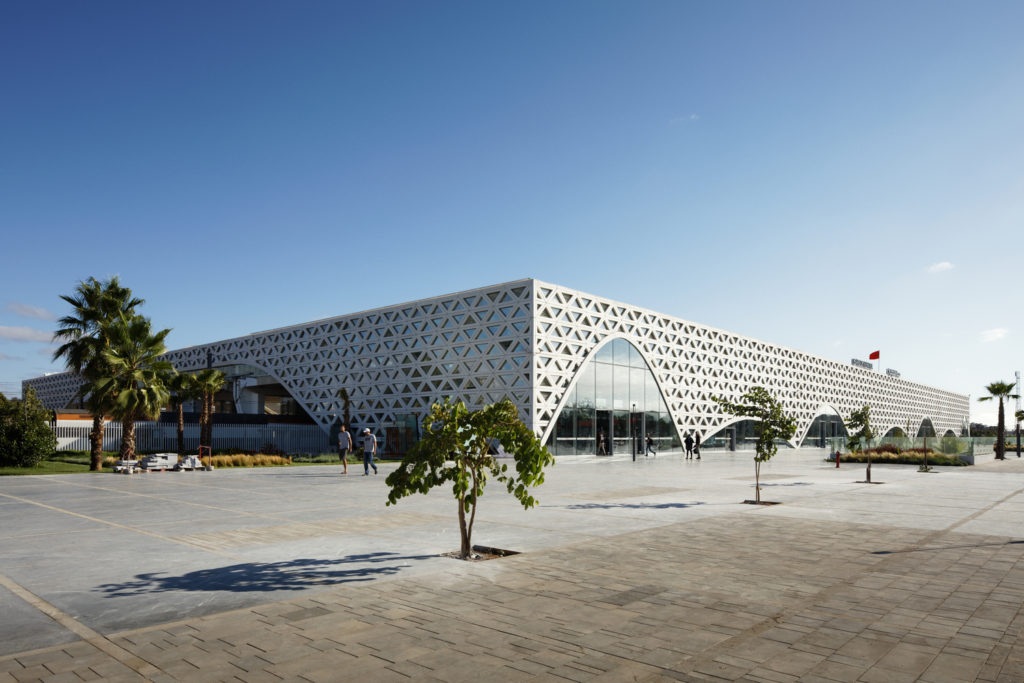
The triangle motif on the building’s skin is inspired by the geometric compositions of Islamic architecture. Expanded to the scale of an urban edifice to create the perfect balance between light, shade, and transparency, the motif of the facade becomes an enormous frame and filter through which to view the city.
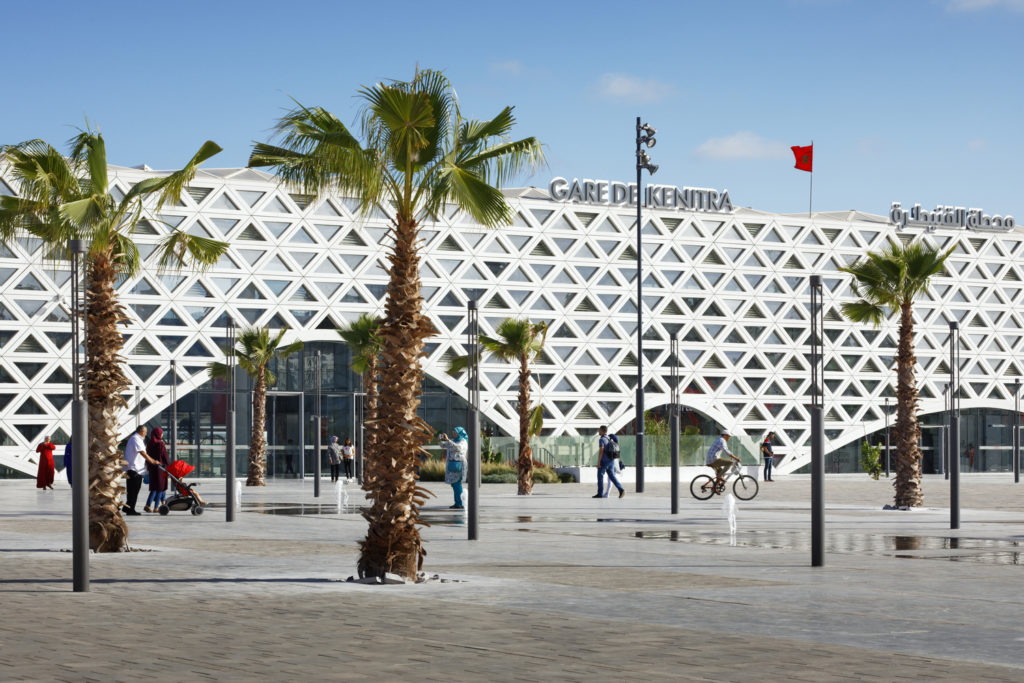
This enlargement of the “mashrabiya” architectural element offers a way of dealing with the strong seasonal variations of the station’s outdoor temperatures. This active and porous skin naturally filters light and air to ensure comfortable interior temperatures. Shadows cast by the functional blocks onto the gray marble floor and the glazed surfaces of the facades, evolving with the season and the time of day, are the poetic result of the natural thermal regulation ensured by the mashrabiya feature.



